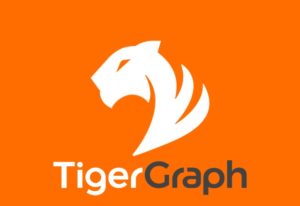
New TigerGraph CEO Refocuses Efforts on Enterprise Customers

(issaro prakalung/Shutterstock)
TigerGraph may have been knocked down, but it’s not out. And under new CEO Mingxi Wu, the graph database maker will be concentrating its efforts on developing features required by its enterprise customer base, including an emphasis on data security and access control.
Wu, who led the TigerGraph engineering team for eight years, is taking a product-first approach in his new role as CEO, which began on June 1.
“I’m a product guy,” Wu said in a recent interview with Datanami. “I know the architecture. I know what things are hard and what things TigerGraph can solve and what no other vendor can solve.”
Over the next six months, Wu plans to double-down on the features that TigerGraph’s customer base–which heavily features financial services companies–considers most important.
“We will harden our enterprise readiness and make our data ingress and egress more versatile, and also make our security control more fine-grained,” Wu said. “And also make our data integrity monitored, detected, and remediated. No other vendor is pushing this hard as TigerGraph now.”
Wu, who has a PhD in database and data mining and worked on database optimization for Oracle previously, said TigerGraph’s customers demand more fine-grained access controls for data stored in TigerGraph. Specifically, they want more control over what database elements, including graph vertex and edges, they expose to their users.
On the data ingress/egress front, the company will be working to ensure that its customers can store data in whatever format they desire, such as Avro or ORC. “You need to provide a very versatile, heterogeneously addressable ingress/egress pipeline,” Wu said.
TigerGraph’s database is heavily used by banks and other financial institutions for detecting fraud and powering anti-money laundering (AML) solutions. While relational databases can also run these compute-heavy workloads, the connected nature of data residing in a graph database makes it far faster and more efficient.
The Redwood City, California, which was founded in 2012, ran into some financial issues in 2022. The cash burn rate for the company, which has raised $171.8 million through a Series C round, got out of balance, Wu said. The board responded by replacing founder Yu Xu, who was then the CEO, with their lead engineer Wu. Xu remains with the company as its chief technology officer, where he will work with key customers and help chart the strategic direction of the company, Wu said.
Coming from the engineer side of the house, Wu is confident that the product has a strong footing and that any operational hiccups will soon be overcome.
“The board really sees how I operated the engineering team for the past eight years,” he said. “They’re pretty happy for the operational results and the technical depth that I bring to the company and the consistency. Also, I’m financially aware.”
People outside of TigerGraph who say the company needs an overhaul in the product and engineering department are misinformed, Wu said.
“But from the inside, I can tell you the product and engineering group is always marching towards the goal, enterprise readiness, and the customer needs,” he said. “I would say we gradually transitioned to product-led growth instead of the previous two or three years, [which] was sales-led growth.”
Despite the financial situation, the company’s customers have continued to invest in the database. The customer churn rate has remained quite low, Wu said, and the reason is that Fortune 100 customers are putting the TigerGraph database into production.
The unique nature of graph databases and their capability to efficiently surface connections in the data that would normally require numerous (and computationally expensive) SQL joins bodes well for the future of the product category as a whole, Wu said. After people understand what graph databases are good at, they are loath to go back to relational databases for particular workloads, he said.
“The graph database is really a concept that people will have a hard time to understand,” he said. “When I started, I always questioned this from my engineering background. I did relational database optimization for three years at Oracle, so I know how a relational database engine work inside and out.
“So when I started in graph, I always questioned: Does this graph database need to exist?” he continued. “After nine years, I’m still not finding any objections yet. There’s no reason that graph database should not exist. And more and more, I see the advantage that it [brings] to really avoid repeated joins.”
The core TigerGraph database itself is solid, Wu said. The main impediment to adoption revolves around other issues that are unique to enterprise environments, Wu said.
“The blocker is mostly how fast you can integrate to their whole production system, and how quickly you can pass all the enterprise readiness checkmarks,” he said. “All this maturity takes time.”
Related Items:
TigerGraph Cloud’s New Capabilities Help Close the Data and Decision Gap
TigerGraph Bolsters Database with Graph Analytics and ML
TigerGraph Unveils ML Workbench, Winners of Its ‘Graph For All Million Dollar Challenge’
































